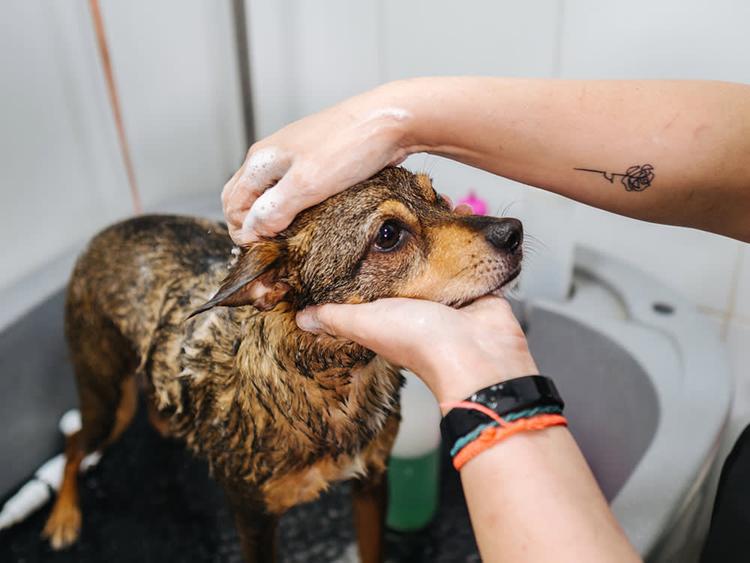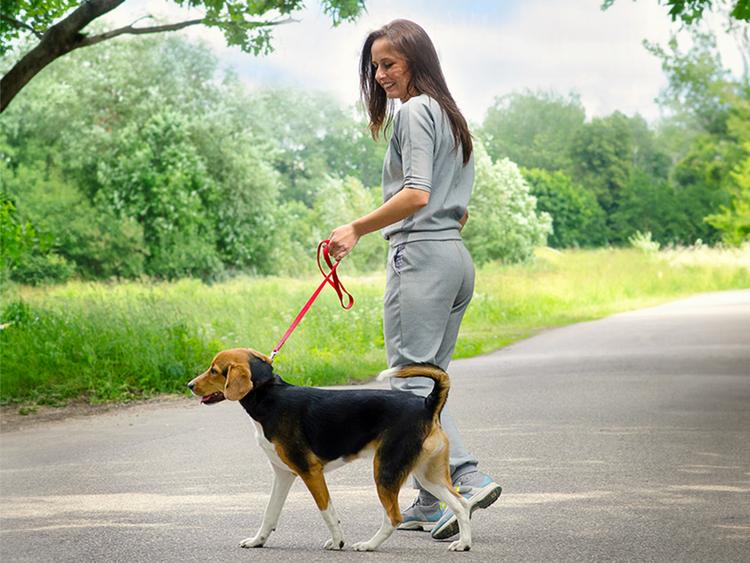Eco-Friendly Animal Shelters? Yes, Please!
When you a
When you a
by Debra J. White, | September 20, 2023

Courtesy Humane Society Silicon Valley
Animal shelters save homeless dogs and cats, fight cruelty, and educate the public about pet overpopulation. But shelters themselves are rarely eco-friendly. When many of them were built, energy efficiency wasn’t a priority, air circulation systems were poor, and there was a reliance on toxic materials, especially for cleaning. The good news is that this trend is beginning to take a green turn, one animal shelter at a time. Here are a few eco-friendly, green animal shelters leading the way.
Find out how these innovative animal shelters are using eco-friendly methods to help save animals and combat climate change at the same time.
Among the first eco-friendly facilities, upstate New York’s SPCA of Tompkins County opened in 2004. Certified as the first green shelter in the country, Tompkins received a LEED (Leadership in Energy and Environmental Design) silver rating from the U.S. Green Building Council.
This animal shelter boasts a cozy and bright atmosphere, thanks to its ample natural light and separate air systems. Additionally, the shelter utilizes a sizeable solar-powered system on its roof to further support its sustainability. The building’s design focuses on earth-friendly adaptations, creating an animal shelter that benefits both people and the planet.
According to Pat Heller, director of development, Potter League for Animals in Middletown, Rhode Island, opened its approximately 19,500-square-foot green shelter in 2009. Since they take in nearly 2,000 animals each year and also receive dogs from several animal control agencies, they can definitely use the space. The league’s shelter was LEED-certified at the gold level.
“Our building has many green features that will not only benefit the animals but the local environment as well,” says Heller. Because the area receives ample precipitation, the design firm, ARQ Architects of Kittery, Maine, incorporated an innovative water reuse system (a 15,000-gallon cistern) to capture runoff that can be recycled for cleaning. Considering that shelters use thousands of gallons of water every month for this purpose, that’s a significant step forward.
Additionally, the parking lot is covered with a permeable surface to prevent runoff into nearby wetlands. “Rainwater gets polluted with gasoline and oil from the parking lot, then it drains into the wetlands. This will cut down on contamination,” Heller explains.
Other eco-friendly details include sensors that control the heating and ventilation systems, toxin-free paints, and dual-paned windows for insulation. Heller adds that the shelter will also recycle or reuse as much of the construction waste as possible, which will help reduce the landfill burden.

via / Humane Society Silicon Valley
In California, the Humane Society Silicon Valley (HSSV) has an innovative gold LEED Certified eco-shelter. Nancy Willis, VP of Strategic Growth in Marketing, says their shelter includes an efficient water-cleansing system, which reduces water consumption as it ensures the appropriate cleaning and disinfecting of kennels. When designing the shelter, HSSV also set its sights on reducing energy consumption. As part of their efforts, HSSV added Milpitas’ largest single-site solar panel installation, an advanced heat recovery system, and a reflective “cool” roof.
Additional green features designed into the community center by California architects George Miers & Associates include drought-resistant plants, dual-flush toilets, synthetic turf in the dog park and play areas, and passive heating/cooling. And simple, earth-friendly touches — such as using biodegradable cat litter and eco-sensitive janitorial products and recycling office products — are standard practice.
Though LEED certification is a good thing to have, shelters don’t need it to go green. The Maricopa County Animal Care and Control in Phoenix replaced one of its two aging facilities with an eco-friendly shelter. Though the municipal shelter lacked the criteria for LEED certification, Linda Soto, former shelter division manager, says they still incorporated energy-efficient features. “The outer walls are constructed using foam and concrete [material] that’s super-insulated. The roof is also coated for additional heat reduction.” That’s crucial in Phoenix, where daytime temperatures rise above 100 degrees for at least four months each year. The building is climate-controlled for maximum energy savings, and lighting in offices and restrooms is sensor-equipped.
A handful of other green shelters include Canada’s Bow Valley SPCA, Michigan’s Humane Society of Huron Valley, California’s Sacramento County Animal Care, and Texas’ Dallas Animal Services. More shelters will no doubt go green, as cities begin to require that new private buildings meet environmentally appropriate standards.
When it comes to planning, going green requires a commitment not only of time and money, but also dedication to eco-friendly principles. James F. Owens, project manager with Boston’s Rauhaus Freedenfeld & Associates, says it’s more economical to start with something new rather than try to retrofit a project already underway.
For example, water reuse and/or reduction projects are good for the environment and can slice utility bills, but they have to be carefully planned. Owens notes: “Water must be properly filtered and cleaned in the animal areas, where infection can be a concern.“ For shelters that opt not to recycle water, Owens recommends high-pressure washers because they use fewer gallons per minute than traditional hoses.
Air filtration designed to prevent the spread of disease, particularly upper respiratory varieties, is also crucial. According to Lucinda Schlaffer of ARQ Architects, the system should use 100 percent outside air and circulate 10 to 12 air changes per hour. It’s also true that such a system is costly to run, and most shelters operate on slim budgets.
Dr. Wendy Swift, veterinary medical director at the Kent County Humane Society in Grand Rapids, Michigan, adds a caveat: Unless shelters also employ a disease prevention protocol, an air filtration system — no matter how advanced or eco-friendly — will be worthless. “Disease is spread from animal to animal and from human contact,“ she says. “An air filtration system alone will not save lives.“
When it comes to reducing our environmental footprint, every little bit helps. Even if a shelter has no immediate plans for a green building, they can still try these simple things:
Recycle more: Shelters generate large amounts of recyclable material, including cans, newspapers, cardboard, and even mobile phones and accessories.
Start composting: Establish a compost program to prevent compostable materials from being sent to the landfill.
Cleaning products: Use eco-friendly, pet-safe cleaning products for everything from laundry to floor cleaning.
Pick sustainable supplies: Choose supplies, such as paper products, made of recycled and sustainable materials.
Don’t skip the LED bulbs: Make the switch to energy-saving LED bulbs when it’s time to replace light bulbs.
Install light sensors: Installing motion sensors in areas with low traffic and less activity can help reduce energy consumption.
Choose water-wise landscaping: Use less water with native, drought-resistant, low-maintenance, pet-friendly plants. Or add a pollinator garden.
Make use of natural lights: Save energy and brighten moods by using natural lighting where possible.
Going green isn’t a fad — it’s a necessity, the only way to address climate change, reduce pressure on overflowing landfills, and combat pollution. By doing as much as they can given their circumstances, shelters are helping animals and befriending the environment at the same time.
Combating Climate Change in Animal Shelters
Editorial: Reimagining Animal Sheltering: Support Services and Community-Driven Sheltering Methods
Shelters Go Green: LEED-Certified Facilities Care for Animals and the Earth
Debra J. White is an award-winning freelance writer in Tempe. She serves on the board of the Phoenix Animal Care Coalition and volunteers with the Arizona Animal Welfare League and the Sierra Club. She lives with two rescued dogs.

Shelters & Rescue

Shelters & Rescue

Shelters & Rescue

Shelters & Rescue

Shelters & Rescue
The campaign returns for the 10th straight year in August.

Shelters & Rescue
Looking to adopt from a shelter? This guide will help you familiarize yourself with common shelter terminology about both the adoption process and pet profiles.

Shelters & Rescue

Shelters & Rescue
If you’re in search of a pup with a big personality in an adorably small package, you’ve come to the right place.

Shelters & Rescue
Read on for the grim statistics and hopeful solutions to this national problem plaguing shelters and rescues alike

Shelters & Rescue
What pet parents should know about adopting a parvo puppy.

Shelters & Rescue
Daily walks are crucial for pets, especially for shelter dogs waiting for adoption. Learn how you can become a volunteer dog walker with these helpful tips.

Shelters & Rescue
Because rescue kitties deserve your crowdfunding cash, too.